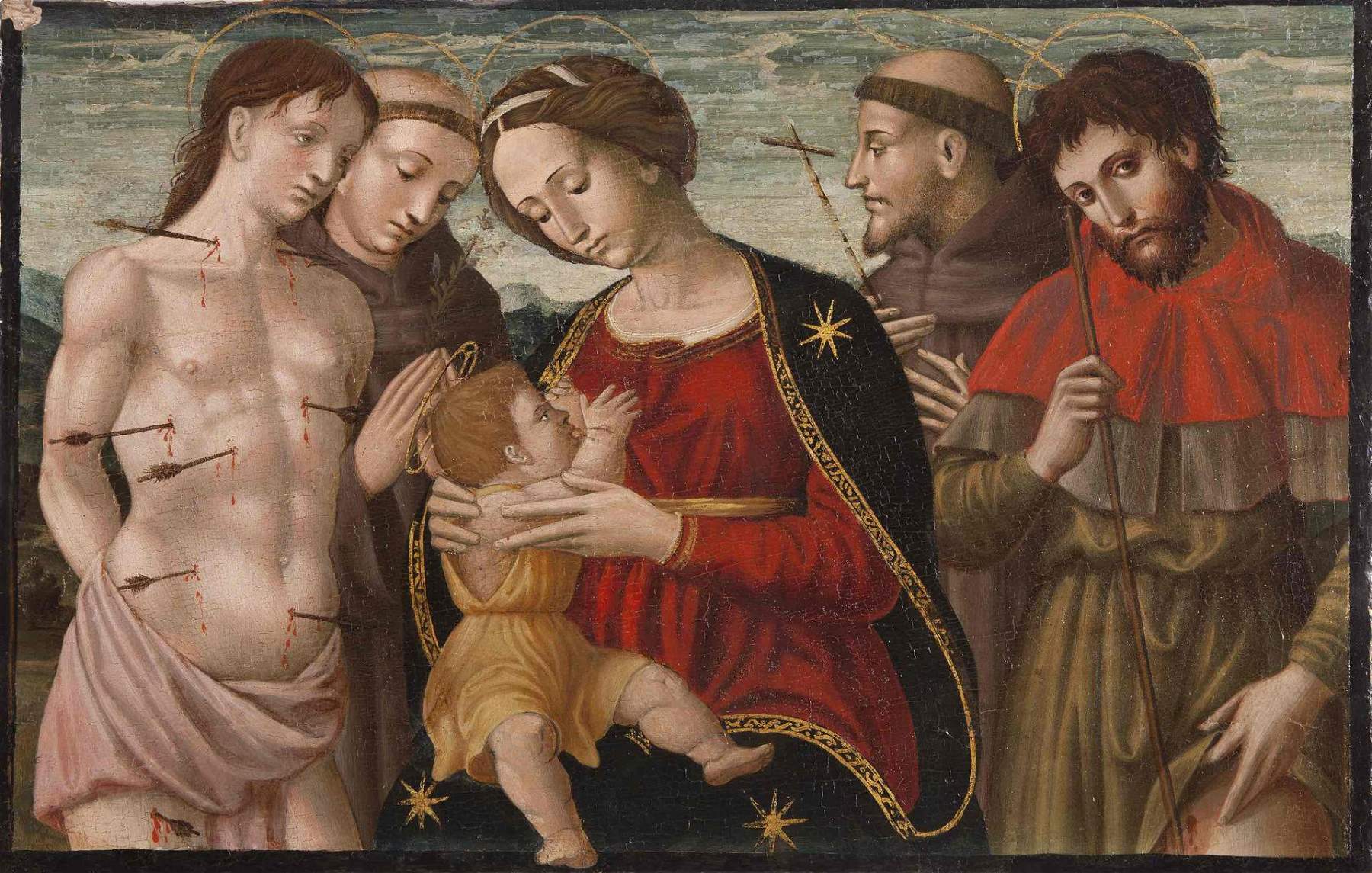Major exhibition on pilgrimage, from Crivelli to Caravaggio, starts in Marche region in three stages
A three-stage traveling exhibition to explore the theme of pilgrimage through works ranging from the Middle Ages to the seventeenth century, following a path marked by the places of worship of St. Michael the Archangel. The project is entitled In the Footsteps of Saint Michael the Archangel. Pilgrims and Devotees in Art from Crivelli to Caravaggio, is curated by Stefano Papetti and starts on April 9 from Loreto, a city universally consecrated as a center of Marian pilgrimage, before continuing on to Ascoli Piceno, where an in-depth focus on territorial devotion to St. Michael the Archangel is planned, and concluding in Senigallia. The itinerary is promoted by the Marche Region and implemented by Artifex International.
The exhibition opens on April 9 at the Sangallo Bastion and will run until July 13, 2022. The second stage will be held from July 22 to November 6 at the Pinacoteca Civica in Ascoli Piceno, and finally conclusion from November 11, 2022 to February 12, 2023 at Palazzetto Baviera in Senigallia.
The exhibition will tell the story of the European routes of faith that pilgrims and devotees, in large numbers, traveled in ancient times: the pilgrims were repeatedly depicted by artists who highlighted the peculiarities of their clothing, with the characteristic signs of the pilgrimage that allowed them to be recognized. The saints invoked along the way, such as St . Roch and St. James the Greater, were thus portrayed by artists in the typical robes of pilgrims on a par with the saints who in the Middle Ages had brought the word of Christ to faraway and dangerous places, such as St. James of the Marches always depicted with a broadside. In Loreto, where not surprisingly this exhibition begins, the Marian shrine was recognized in 1520 as a center of universal pilgrimage on par with Jerusalem, Rome and Santiago de Compostela, thus drawing faithful from all over the world. The exhibition aims to pay tribute to this particular link, and drawing on a rich iconographic heritage, a nucleus of works has been selected in a thematic itinerary that highlights some particular elements, such as the pilgrims’ characteristic dress and the insignia displayed to certify that they have undertaken the journey to the remote holy places.
These are mostly works from the civic collections of the Marche region, where there is no shortage of masterpieces by authors such as Antonio da Fabriano, Carlo Crivelli, Pietro Alamanno, Guercino, Francesco Guerrieri, Pietro Liberi and Ferdinand Voet, who between the 15th and 17th centuries bore witness to this phenomenon of worship, dedicating the representations mainly to St. James the Greater and St. Roch, patron saints of pilgrims, and illustrating the typical attire of devotees both before and after the period of the Counter-Reformation. Also on display in the itinerary are a number of important processional banners preserved in the Marche region, testifying to objects that were fundamental to worship and also representing a highly committed pictorial genre, the making of which was made known as early as Cennino Cennini’s famous treatise in the 14th century. In Ascoli Piceno, the exhibition will feature an in-depth focus related to territorial devotion, paying homage to the Micaelic cult present since the time of the Lombards: important medieval, Renaissance and Baroque paintings, goldsmithing and sculptures testifying to popular devotion to the figure of St. Michael the Archangel will be on display. In fact, the itinerary, which starts from Mont Saint-Michel and passes through Piedmont to the Sacra di san Michele di san Michele Arcangelo in the Gargano, also touches the city of Ascoli and the Piceno territory, as attested by various medieval cult buildings dedicated to the warrior angel.
The persistence in the southern Marche region of the micaelico cult is also testified by the work of the greatest Piceno artist of the 20th century, Osvaldo Licini, who, starting with the 1919 canvas entitled Archangel - which will be on display in the exhibition - dedicated himself to delving into this theme until he elaborated the celebrated icons of the rebel angels that summarize in them the contrast between Good and Evil.
“This exhibition project, supported by the Marche Region,” comments Culture Councillor Giorgia Latini, “traverses part of the history of artistic production by focusing on peculiar and fascinating aspects such as the great devotion of pilgrims told in the images and the figure of St. Michael the Archangel, the defender of the faith who is also the protector of the State Police. Juxtaposing the pilgrims, whose journeys were full of risks and endangered life itself, and the saint who par excellence fights evil, means initiating a reflection through art also on the present, on how even today the challenge of good is not without cost and what drives us to accept it. But it also means going back to the past and the great tradition that Catholic worship has left in our Region, with a trace that in importance can stand alongside Jerusalem, Rome and Santiago de Compostela.”
Pictured: Nicola Filotesio known as Cola dell’Amatrice, Madonna Suckling the Child with Saints Sebastian, Anthony, Francis and Rocco
 |
| Major exhibition on pilgrimage, from Crivelli to Caravaggio, starts in Marche region in three stages |
Warning: the translation into English of the original Italian article was created using automatic tools. We undertake to review all articles, but we do not guarantee the total absence of inaccuracies in the translation due to the program. You can find the original by clicking on the ITA button. If you find any mistake,please contact us.





























